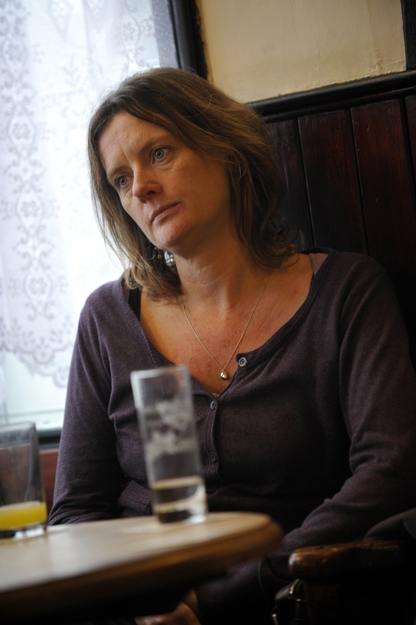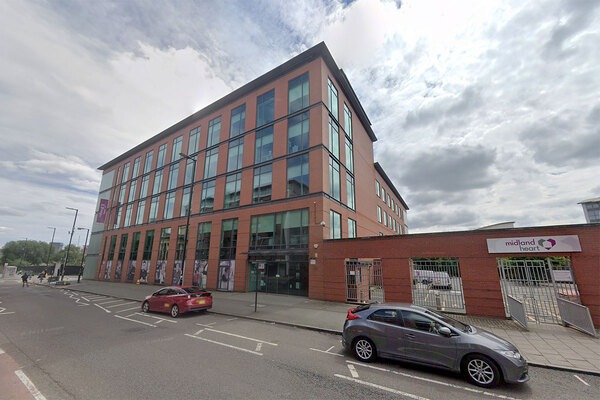The grand plan
The Localism Bill has been criticised as a nimbys’ charter. In the week MPs debate the bill, Lydia Stockdale heads to Kent to ask residents if handing planning decisions to communities will kill development or breathe new life into villages.
‘We are the village green preservation society. God save strawberry jam and all the different varieties…’ So sang The Kinks in 1968, evoking images of hazy rural England and fiercely protective groups of residents fighting to hang on to their rural idylls.
Fast forward 40 years and Inside Housing is in Preston, a picture perfect village with 875 inhabitants in rural Kent. We’re here to meet Oliver Chapman, chair of Preston Parish Council (pictured left), and David Theoff, chair of the Preston and Elmstone village society. Joining us in the Half Moon and Seven Stars local pub are a handful of planning experts.

Source: Matthew McArdle
I want to find out what they all think of the government’s Decentralisation and Localism Bill, and specifically neighbourhood plans, which ministers say will ‘radically reform the planning system to give local people new rights to shape the development of the communities in which they live’.
Critics have called the bill a nimby’s charter. They believe the residents of chocolate-box villages like Preston will use neighbourhood plans as a way to block development - which is why it’s the ideal place to put the coalition’s proposals to the test.
First off Mr Chapman makes it clear that he and his fellow Prestonites aren’t anti-development. ‘We don’t necessarily want development, but we don’t want our village to die through a lack of it,’ he explains.
Both semi-retired, he and Mr Theoff are exactly the kind of people the coalition seems to be relying on to deliver its localism agenda - determined individuals with enough spare hours to give to their community. In most cases this means older, retired people, who were around when The Kinks first released their ode to country living. ‘I don’t know how I ever had time to work full-time,’ laughs Mr Chapman of his community activity.
The Localism Bill, published last month and debated by MPs this week, expects much of volunteers like these two gents. If communities want to take full advantage of the powers the government is offering they’ll need to become near-experts in the planning system.
In Preston they’re already familiar with existing planning rules. In 2006 residents devised a parish plan which outlined their community vision. They also succesfully lobbied Dover Council to recognise their 2008 village ‘design statement’. And a year ago the parish council presented residents with the results of its housing needs survey, which identified a local requirement for 13 or 14 affordable homes. It has since appointed English Rural Housing Association to build them and will discuss sites with planners from Dover later this month.
Localism in action
Prestonites have done what the government expects its neighbourhood plans to achieve, says Keith Harrison, chief executive of Action with Communities in Rural Kent, a charity which helped the residents develop their ideas into workable documents.
He says the Localism Bill formalises ‘what we’ve been doing for years’. ‘It’s not going to be a radical change - there are already real-life examples, like Preston, where this is happening without this legislation,’ he adds. ‘But it will make things easier to take forward when this becomes law.’
Settled into the local boozer, it’s time to discover what neighbourhood plans could do for communities like Preston. Do Mr Chapman and
Mr Theoff think the legislation would have eased their community-led planning? Both men lean back in their seats, deep in thought.
They say they’ve faced a few hurdles, Mr Chapman recalling the greatest ‘barrier of resistance’ from Dover Council planners who said they ‘could not and would not adopt [the Preston village design statement] because you, “can’t achieve a village design statement without an external consultant”’. The villagers stood their ground and last May the council formally acknowledged the document.
If the Localism Bill becomes law, villagers should be pushing at an open door in future. The Communities and Local Government department says the legislation will give councils ‘a duty to adopt a legally compliant neighbourhood plan’.
This doesn’t mean that local planning officers will like it, says Mr Harrison. ‘The thought that’s already been raised by individual officers is that people in communities haven’t got the skills to prepare a plan.’
The Preston and Elmstone village society’s 14 core members include an enthusiastic marketing professional, the owners of an IT business and a retired architecture lecturer. But attempts to recruit more members have largely failed, says Mr Chapman, a semi-retired conservation officer. ‘We’ve made several calls to people to get involved - you get the odd one,’ says Mr Theoff, who used to run his own standby diesel generator business.
Government legislation seems unlikely to encourage other volunteers. ‘People like the idea of localism but they don’t always want to take the lead - they want someone else to do it,’ sums up Trevor Skelton, an ACRK rural officer for east Kent.
Working up a neighbourhood plan will probably fall to the willing few, says Ian Tant, a senior partner at town planning consultancy Barton Willmore. He argues that parish councils, themselves made up of elected but unpaid volunteers, will ‘need to be a lot more informed than they are at the moment about the economics of development’.
The idea is that neighbourhood plans will become an official part of a district’s wider development planning system, so it needs to be professionally done, says Mr Tant. He adds that the process could prove uncomfortable for councillors if decision making is devolved to the local level the government appears to favour.
‘Parish councils will be referee between two or three landowners each of which want the development [on their land],’ says Mr Tant.
In Preston the council ‘balks’ at the idea of selecting sites, says chair Mr Chapman. It has avoided choosing between locations, thus making the favoured local landowners very rich, asking the English Rural Housing Association to pick instead. ‘The only thing that worries me about the devolution of powers is that it’s all too close,’ he explains, worrying it could foster accusations of ‘cronyism and favouritism’.
He adds that he also has concerns about the government’s wish to encourage developers to work closely with communities, wondering if this will always run smoothly. ‘We all know there are parish councils that are completely incompetent,’ he states.
One part of neighbourhood plans that could appeal to Mr Chapman, though, is the ability for a community to set its own village confines. Official guidance on neighbourhood plans allows for villagers ‘to propose the boundaries of their neighbourhoods’. Preston and Elmstone’s confines are a major frustration. ‘They’re an arbitrary line on a map. Around Preston it’s so tightly drawn that there’s no space for development within it.’
Neighbourhood plans will also let communities outline their affordable housing requirements, explains Mr Tant. In many cases though, the planning expert suspects residents will use the right to protect themselves against development rather than to communicate their need for it. ‘In that respect these neighbourhood plans will be a nimby’s charter, used to define what they won’t want,’ he says.
Even in Preston, where the housing need survey revealed most people recognise a need for affordable housing, vocal opposition to the idea remains. When the results of the questionnaire were announced by Tessa O’Sullivan, an ACRK rural housing enabler, at a village hall meeting last year, some residents were clearly unhappy about the prospect of development.
‘There were some unpleasant assumptions made about what was going to happen and how it would happen,’ recalls Mr Chapman.
When putting a neighbourhood plan forward more than half of residents who vote must be in favour for it proceed to district level. ‘What’s unclear is the moment at which point these referendums take place,’ says Mr Tant. ‘Imagine all that effort and time that individuals will put into these plans, and then, when it comes to the vote, the plan isn’t carried - that’s going to lead to an awful lot of heartache,’ he says.
This is the reality of community-led planning it seems - a few people putting themselves out on a limb, only to risk being lambasted by their neighbours. One way to avoid this would be to expand the local decision making process beyond planning and development. ‘When you ask a resident if they want housing to be developed in their village, their knee-jerk reaction will be to say, “no”,’ explains Mr Harrison. However, if you encourage them to think of the bigger picture - of their community’s future - you’ll start to get somewhere, he says.
Money matters
Now we’ve worked our way through most of the Preston pair’s questions about neighbourhood plans, we reach the major sticking point: how will they be funded?
It’s estimated each plan will cost the government £20,000 (Inside Housing, 17 December 2010). If all 10,397 parishes in England commission a plan the Treasury’s bill could top £200 million. This figure excludes the neighbourhood plan bill for urban areas (see box below: Neighbourhood planning in towns and cities) which covers 41 per cent of the country.
There’s also the potential bill for the professional help many communities will need when developing the plans. ‘I think district councils will provide that professional resource, but there’s not indication at the moment where the money’s going to come from to pay for it,’ says Mr Tant.
‘The only risk is that at a time when budgets are cut they [local authorities] only see this as an extra cost rather than a chance to make savings [in the longer term],’ says Chris Wade, chief executive of Action for Market Towns, a membership organisation that helps towns across England develop community-led plans.
For now Mr Chapman and Mr Theoff have more questions about neighbourhood plans than answers, but they’re not too concerned. ‘At this moment in time we’ve got to deal with the rules as they stand,’ says Mr Chapman. The council chair says that the thought of turning 70 and thinking ‘Preston used to be a nice place’ drove him to become so heavily involved in village life. Or, as The Kinks put it: ‘Preserving old ways from being abused. Protecting new ways for me and for you. What more can we do?’.
Neighbourhood planning in towns and cities
‘Affordable housing is high up communities’ priorities in terms of need. However, groups haven’t always found a way to work with housing providers, developers and their local authority in order to bring housing into fruition,’ says Chris Wade, chief executive of Action for Market Towns, a membership organisation that has worked with 200 towns, most of which have populations lower than 10,000, to develop community-led plans. ‘We look at housing as a test for how successful the Localism Bill can be,’ he says.
Neighbourhood planning on this scale is possible, but towns and cities with larger populations will need to be broken down into smaller neighbourhood forums.
Shropshire Council broke 70,000-strong Shrewsbury into six areas 18 months ago when it started its community working initiative, with the aim of getting local people more involved in decision-making.
The Decentralisation and Localism Bill suggests that where parish councils do not exist, local communities form neighbourhood forums in order to develop neighbourhood plans.
In Salford, a city with more than 35,000 inhabitants, Colin Marchbank-Smith says he needs more detail from the government about exactly how neighbourhood plans would work. But the chair of arm’s-length management organisation Salix Homes’ customer senate adds that he is interested in any idea that could give local people more involvement in developing homes local people really need.
‘There’s currently a “them and us” thinking [between local communities and decision makers],’ he says. ‘Particularly with planning.’
Neighbourhood Plans in a nutshell
Last month’s Decentralisation and Localism Bill offers communities new powers to draw up neighbourhood plans for local development. It should become law later this year. Neighbourhood plans will allow communities to:
- Set up neighbourhood development orders to define specific developments or types of development which will have automatic planning permission without the need for any application to the local authority;
- Grant outline permission in other cases to establish the right to develop so only the details will need approval;
- Establish general policies to steer traditional planning application decisions;
- Propose neighbourhood boundaries.
In places without existing parish councils, communities will establish neighbourhood forums to create a neighbourhood plan. The local authority will have ‘a duty to provide support and to ensure compliance with other legal requirements’.
Independent assessors will ‘lightly examine’ the plans to ensure legal and national policy compliance and alignment with neighbouring plans and council strategy.
A referendum requiring a majority in favour would ensure public support for the final plan.
Ministers say neighbourhood plans will not hinder development. Councils must adopt all legally compliant neighbourhood plans.











